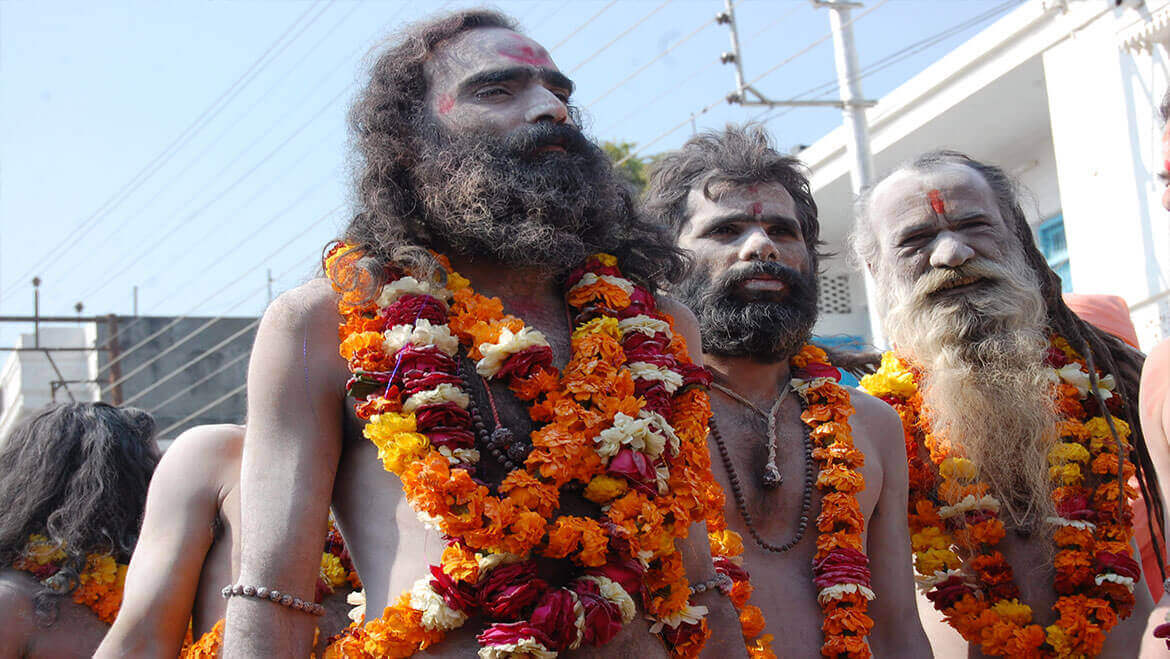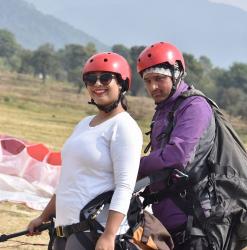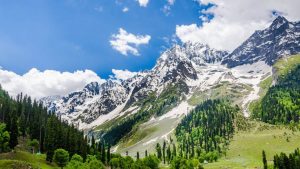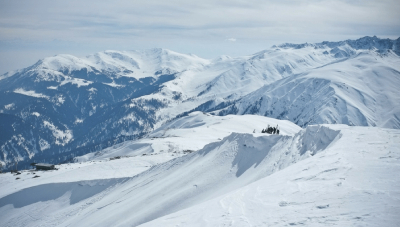The next Mahakumbh Mela will be held in Haridwar in 2021, from 14th January to 27th April. As usual, it will be a grand affair, and will be attended by a large number of devotees across the world. It is an extravaganza that draws millions of devotees from India and around the world, and is the world’s largest pilgrimage and religious gathering for Hindus.
Before you attend the 2021 Mahakumbh Mela in Haridwar, here are the 81 interesting and hidden facts about the Kumbh Mela and the Naga Sadhus that will introduce you to this magnificent event.
Recommended Tour Packages
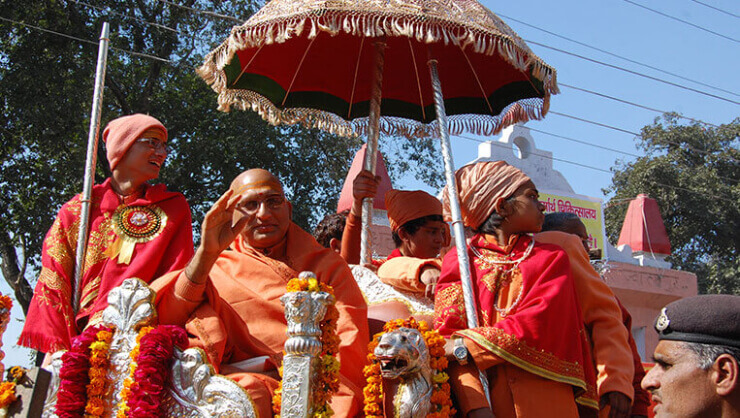
- The Normal Kumbh Mela is held every 3 years, switching between 4 different locations- Prayag (at the confluence of the Ganga, Yamuna and Saraswati Rivers), Ujjain (River Shipra), Haridwar (River Ganga) and Nasik (River Godavari). The Ardh Kumbh Mela, also known as the ‘Youngest of Kumbh Melas, is held at Allahabad and Haridwar every 6 years between the two Purna Kumbh Melas.
- A Maha Kumbh Mela is held after every 144 years, that is, after the completion of 12 Purna Kumbh Melas. So, you will only get one chance in your entire life to witness the mega visual spectacle of the Maha Kumbh Mela, and experience its unbridled volume of faith and spirituality.
- Another type of Kumbh is the Purna Kumbh Mela, which is held in Allahabad every 12 years.
- Each of these locations become host to this Mela of spectacular grandeur once every 3 years.
- The Kumbh Mela is over 2000 years old!
- The word ‘Kumbh’ literally translates to the pitcher that held the Nectar of Immortality.
- The earliest mention of any type of Mela to be held at the current sites of the Kumbh Mela can be found in the works of Hiuen Tsang, the Chinese Buddhist monk, traveler, scholar and translator, who traveled to india during the 7th century. He mentioned in his works that a grand Kumbh-like fair was organized by Emperor Harshavardhana at Prayag which was attended by half a million people.
- During the reign of the Emperor Harshavardhana, the site where the Kumbh Mela used to be held was known as Po-lo-ye-kia. It was later renamed to Allahabad, before being renamed Prayagraj in 2018.
- According to numerous ancient Indian sources, the Magh Fair at Allahabad (now known as Prayagraj) might be the oldest Kumbh Mela, although it was not called by this name at that time.
- The most modern origin of the Kumbh Mela can be found in the British Report of 1868, which mentions a ‘Coomb Fair to be held in Allahabad in January, 1870’.
- According to a widely held belief, the Brahmin priests of Allahabad incorporated the Kumbh Legend into the annually held Magh Mela in order to increase the allure and significance of their revered city.
- The original Kumbh Mela was held at Haridwar. This fair was held according to the astrological sign Kumbha (Aquarius).
- The Maha Kumbh Mela is held at Prayagraj.
- The 2019 Kumbh Mela held in Prayagraj was an Ardh Kumbh Mela.
Other Interesting Blog to Read
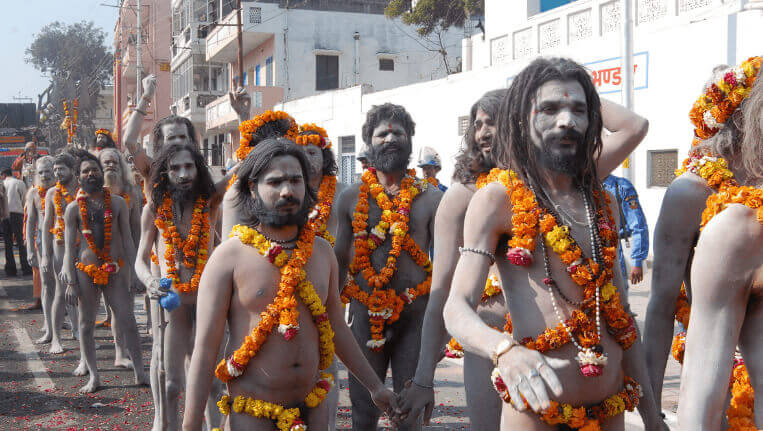
- In 2001, almost 70 million people attended the Purna Kumbh Mela, held on the shores of the River Ganga.
- The Magh (Kumbh) Mela is held every year at Allahabad in the month of Magh according to the Hindu calendar (14 January-end of February). It is also known as the ‘Mini Kumbh Mela’.
- One of the most interesting and fascinating features of the Kumbh Mela is its Akharas, the place of congregation of armed saints. These Akharas were developed by Adi Shankara in the 8th century to arm the saints so that they can protect themselves against invading forces.
- Initially, there were 4 Akharas. But, due to many ideological differences, these 4 Akharas were further divided into 13 categories, mainly of Shaiv, Vaishnav and Udasin sects.
- The Akhara culture has given rise to the Akhara vs Akhara duels, which are one of the most unique highlights of the Kumbh Mela. The armed saints of the various Akharas fight with each other to establish supremacy, and several contests are held to showcase their skill and bravery.
- Although initially started to celebrate the fighting skills and bravery of the saints, the Akharas have over the years become centers of learning where the devotees are given lessons on Hinduism, along with its many sects and teachings.
- The most educated Akhara out of the 13 Akharas is the Niranjani Akhara, and it has more than 50 Mahamandaleshwars.
- In the 2019 Kumbh Mela held at Prayagraj, a separate Akhara for ‘transgenders’ was introduced for the first time.
- Known as the ‘Kinner Akhara’, this Akhara was established by the Indian Transgender Community under the leadership of the famous transgender rights activist Laxmi Narayan Tripathi from Mumbai.
- The Kinner Akhara joined the first day of bathing at the Kumbh Mela.
- Despite being the world’s largest pilgrimage for Hindus, one can also find people from other faiths and religions at the Kumbh Mela.
- The multi-religious feature of the Kumbh Mela is mentioned in the book of the erstwhile British civil servant, Robert Montgomery Martin, where he talks about the Haridwar Kumbh Mela of 1858, which was attended by the devotees from numerous religions and faiths.
- One of the most iconic features of the Kumbh Mela is the presence of holy men, tantriks and sadhus belonging to different Hindu sects who come here to perform sacred rituals in order to achieve salvation.
- The most popular such Hindu sects are the Nagas (who refrain from wearing any clothes), the Kalpwasis (who bathe thrice a day) and the Urdhawavahurs (they believe in putting their bodies through extreme austerities).
- According to many Government reports, the Kumbh Mela creates around 6,50,000 jobs.
- According to the Government data of 2013, the total earnings from the Kumbh Mela of that year amounted to around Rs. 12,000 Crore.
Other Interesting Blog to Read
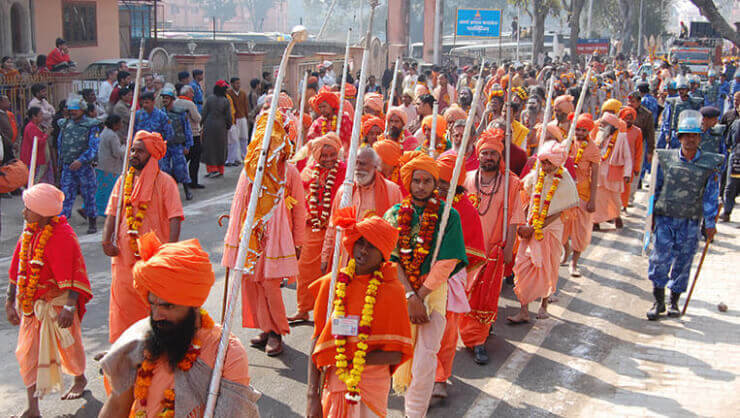
- The Kumbh Mela of 2013 witnessed a total attendance of more than 120 million people. It was considered to be the largest gathering of people to ever take place on Earth.
- The Kumbh Mela of 2013 lasted for 58 days.
- The Kumbh Mela of Prayagraj is considered to be the holiest Kumbh Mela among all Kumbh Melas due to it being the site of the confluence of three sacred rivers (Ganga, Yamuna and Saraswati).
- Many devotees spend the entire month of Magh (between January and February) during the Kumbh Mela in Prayagraj to seek their spiritual enlightenment and salvation.
- This ritual of staying at Prayagraj for the entire Magh Month is called ‘Kalpvas’.
- The arrival of the members of an Akhara or a sect of Sadhus at the Maha Kumbh Mela, also known as the Peshwai Procession, marks a memorable occasion, and offers you a surreal experience of unmatched mysticism.
- This grand arrival of the Sadhus to the venue of the Kumbh Mela sitting on gold and silver thrones atop elephants or horse driven chariots, or in some cases, on foot and followed by the majestic displays of swinging swords, silver staffs and fiery trishuls by the ash-smearing Naga Sadhus, are one of the landmark events of the Kumbh Mela.
- One of the most popular attractions of the Kumbh Mela is the ritual of Aarti. During this holy ceremony, the whole river bank comes alive with glittering lamps and diyas, and soothing prayers and hymns chanted by the priests. Attended by huge crowds, this divine aarti ritual is believed to bring the 5 elements of nature (fire, water, air, earth and space) together at one place.
- The visit to the Kumbh Mela remains incomplete without experiencing the spellbinding aura of the mysterious Naga Sadhus.
- The Naga Sadhus have relinquished all the material pleasures and desires of the world in order to lead an astute ascetic life. They don’t believe in clothing themselves and can be seen walking naked in the Kumbh Mela. They have also taken vows of celibacy.
- The sight of their ash-covered bodies and matted dreadlocks can be both terrifying and fascinating for many visitors and offer a glimpse into a life without any lust or desire.
- The Naga Sadhus are Shaivites (the followers of the Lord Shiva) and they live in the Himalayas.
- The Kumbh Mela is the only time of the year during which they come down to the plains and it is therefore, an occasion of great significance to them.
- It is also the only time of the year when one can become a Naga Sadhu. This initiation ritual takes place during the Kumbh Mela and is attended by different people of various age groups.
- In order to become a Naga Sadhu, one has to renounce the desires of material comfort, both in body and mind, and gain complete mastery over one’s emotions, particularly lust. Only after that, are they granted Diksha, or the permission to become a Naga Sadhu.
Other Interesting Blog to Read
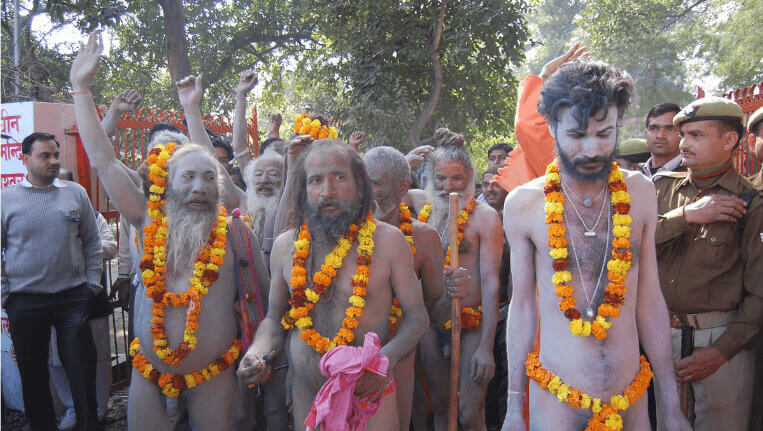
- A Naga Sadhu can only eat once a day, and must only eat whatever he has been given. He can beg for sattvic food in maximum 7 houses after which, if he has not been given any food, he has to starve for the day.
- Due to having attained the state of enlightenment, the Naga Sadhus are bestowed with the honor of taking the first holy dip in the sacred waters of the Ganga, Yamuna, Shipra and Godavari during the Kumbh Mela.
- They are famous for carrying weapons and are widely considered to be ‘the saviors of the Hindu Sanatan Dharm’.
- One of the most amusing and interesting features of the Kumbh Mela is the presence of different types of Naga Sadhus with unique qualities, such as the long-haired Naga Sadhu, long-nailed Naga Sadhu, the money-maker Sadhus (who offer their blessings in return for some money) and the Google Naga Sadhu (he wears sunglasses).
- One can also witness the numerous female Naga Sadhus taking holy dips during the Kumbh Mela.
- The female Naga Sadhus lead the same life of abstinence from the pleasures of body, mind and material like their male counterparts.
- The female Naga Sadhus are made to shave their heads during their initiation ceremony and bath in the river.
- They must prove their complete devotion to the Almighty during this ritual.
- The respect given to the female Naga Sadhus is equal to the one given to the male Naga Sadhus.
- The only difference between the male and the female Naga Sadhus is that unlike the male Naga Sadhus, the female Naga Sadhus are made to cover themselves with a yellow cloth, even when taking dips in the river.
- The Naga Sadhus are notoriously famous for performing death-defying stunts and painful acts to prove their devotion to God, as well as the strength of their minds and souls.
- Some of the most popular and goosebumps-inducing acts performed by the Naga Sadhus are standing straight for more than 12 hours while carrying heavy objects in the most sensitive parts of the body, and burying themselves underground for days among others.
- You can click their pictures (most of them are happy to get photographed), talk to them and get an insight into their lives and experiences, or gain some precious knowledge, the choice is yours! However, always ask for their permission before doing any of these things.
- Being the most sacred and the largest pilgrimage for Hindus, the Kumbh Mela was inscribed on the UNESCO’s Intangible Cultural Heritage of Humanity’ list in 2017.
- Apart from being the largest religious gathering of people on Earth, the Kumbh Mela is also a haven for migratory birds. The Triveni Sangam in Prayag becomes home to thousands of migratory birds who come here from faraway places like Siberia via Afghanistan, Mongolia and Tibet, covering thousands of kilometers and crossing high Himalayan mountains on the way.
Other Interesting Blog to Read
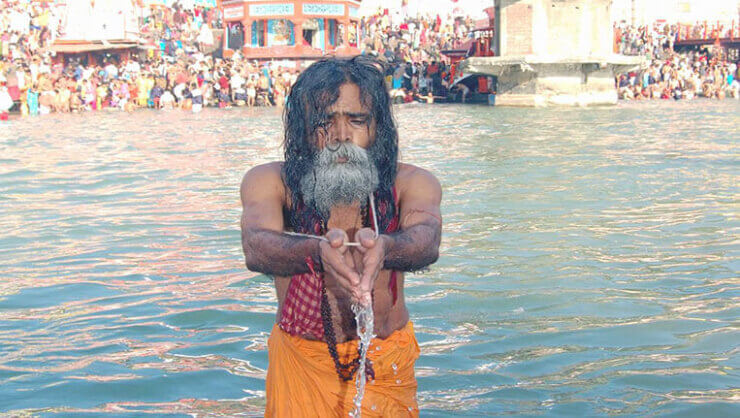
- The Kumbh Mela in 2001 in Allahabad saw an attendance of around 40 million people on one of its days, which made it the busiest day in the history of the Kumbh Mela.
- The Kumbh Mela tests your devotion and the capabilities of your body and mind to overcome insurmountable obstacles in your pursuit of enlightenment.
- As the Kumbh Mela is held in the winter months, one of the most difficult hurdles presented to you to test your faith and resolve is to take a holy dip in the cold waters of the rivers.
- One of the biggest attractions of the Kumbh Mela is the submerged Hanuman Temple. A unique and mysterious feature of this temple is that it remains submerged under the waters of the River Ganges for most parts of the year, but reveals itself during the auspicious occasion of the Kumbh Mela.
- According to Hindu mythology, the temple is submerged because River Ganga raises her water level to touch the feet of Lord Hanuman. A visit to this wondrous location will further push you into the warm embrace of spirituality, especially when you witness the exotic and huge idol of Lord Hanuman sitting in reclining position.
- Due to its huge crowds, the Kumbh Mela is also popularly called ‘the world’s largest congregation of pilgrims’.
- The first bath of the Kumbh is known as the ‘Shanti Snan’ and is taken by the saints. It is only after the royal bath of the sadhus that other people get the chance to take their holy baths.
- Apart from taking holy dips in the river, the Kumbh Mela also holds other activities like Pravachan, Kirtan and Mahaprasad that would take you to the pristine and pure world of Gods and Goddesses.
- According to the various BBC Reports, the Kumbh Mela sees the setting up of 14 temporary hospitals employing around 243 doctors round the clock, along with more than 40,000 toilets, 20,000 dustbins and 50,000 police officials.
- In order to ensure the safety and security of the pilgrims, around 1150 CCTV Cameras are installed throughout the whole venue of the Kumbh Mela, along with the setting up of 135 watch towers.
- In addition to this, 40 police stations, 62 police posts and 40 fire brigade stations were also set up to deal with any kind of emergency situations.
- The Kumbh Mela became a subject of study in the world-renowned Harvard University in 2013. The study, along with the required research, was carried out to understand the logistics as well as the economics of the event.
- The Uttar Pradesh Government spent more than Rs. 40 million in the Kumbh Mela held at Prayagraj in 2019 to ensure a clean, safe and enriching event.
- The Kumbh of 2019 also became famous among the millennials for boasting eco-friendly toilets and five-star tents.
- The venue for the 2019 Kumbh Mela was the largest venue in its history.
- It was spread across 3,200 hectares, thus making its geographical land area bigger than that of four countries- Monaco, Nauru, Tuvalu and Vatican City.
- Around 22 Floating Bridges were built across the River Yamuna in the Ardh Kumbh Mela of Prayagraj held in 2019 to ensure a smooth and hassle-free movement of pilgrims.
- The number of people taking holy baths in the Kumbh Mela is, on an average, more than the population of many European countries.
- Over the years, the Kumbh Mela has also seen a rapid growth in its advertising. The 2019 Ardh Kumbh Mela saw pictures of Naga Sadhus and the Kumbh Logo being displayed throughout the city of Prayagraj.
- To ensure the fast travel of the devotees and pilgrims to the venue of the Kumbh Mela, the Indian Railways also launches special Kumbh Mela Trains during this occasion.
- During the Kumbh Mela of Prayagraj in 2019, the Indian Railways launched around 800 Kumbh Mela Special trains to the holy city.
Check out: Kumbh Mela Destinations in India
We hope you liked our blog, “ Interesting Facts about Kumbh Mela and Naga Sadhus”.
Plan a trip to Upcoming Kumbh Festival and experience every aspect of it up close. Share the blog as much as you can, and keep returning to us for more such blogs in the future.
Like & Follow our social media accounts at Twitter, Facebook, Linkedin & Instagram for getting the latest updates & offers on holiday packages.
Disclaimer: We do not take credit for some of the licenced paid images used in our blogs, whether from Google Images, Fotolia & Shutterstock. All such images are the copyrights of their respective owners and we try to provide credit for them wherever we can. If, however, any copyright image has been used on our blog, the concerned person can either mail us directly to remove the image or provide credit to whomsoever the image may belong to.
About the author
From the Lake District, Nainital, Nidhi Singh is a travel writer whose love for mountains can be seen in her write ups. Talk about solo travelling, indulging in adventure activities, binging on good food, planning budget trips or the Aurora Borealis and you will get all her attention. It is the wanderlust that keeps her going and if at all she could get one wish granted she would love to live a life less ordinary. Follow her on Twitter, Facebook & Instagram.

 +91-9212777225
+91-9212777225 Plan Your trip
Plan Your trip